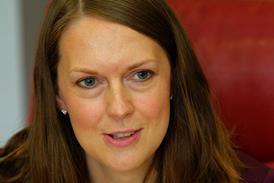Clinicians are vital to identifying inefficiency and solving problems, yet they often lack the skills necessary to transform care for the better, say Chih Hoong Sin and colleagues.
Innovations designed and implemented by clinicians have the potential to release £9bn of efficiency savings a year in the UK, almost half of the £20bn NHS target for 2014-15.
‘Some parts of the healthcare workforce might think that demonstrating value for money is not part of their job’
But in order for clinicians to help realise greater efficiencies during these austere times, they need to have the skills to identify the costs and benefits of what they do, understand how these compare with what others are doing, and know how to continuously transform care for the better.
Unfortunately, some parts of the healthcare workforce (in common with their counterparts across the public services) lack these skills. They might even think that demonstrating value for money is not part of their job.
To help them understand how they can contribute to overall efficiency while maintaining high quality care, the Office for Public Management has designed a programme of training and support, endorsed by the Institute of Leadership and Management, about how to use a bespoke and accessible economic assessment tool.
Empowered workforce
The programme was delivered in Wales, Scotland and Northern Ireland in partnership with the Royal College of Nursing, with funding from the Burdett Trust for Nursing, throughout 2012 and 2013. It aimed to equip nurses with skills to assess the economic value of nurse led services and to use results to guide the development, improvement and delivery of services.
Nurses are empowered to achieve real efficiency savings that will make a significant contribution to the national agenda, and which will enhance the quality of care for patients and other users of health services. The outputs contribute to a growing body of evidence for commissioners and planners of health services relating to the costs and benefits of different nurse led interventions.
The two case studies below illustrate how opportunities for improving efficiency have been identified in terms of activities that support service delivery, as well as the service delivery itself.
Case study 1: Electronic record keeping
Jayne Miller, assistant clinical nurse manager, early years, children and families community nursing service at NHS Ayrshire and Arran
The service
The early years, children and families community nursing service works across Ayrshire and Arran to deliver high quality nursing services in partnership with NHS colleagues and partner agencies, embracing the principles of Getting it Right for Every Child.
‘The primary driver of the electronic record keeping initiative was to improve quality of patient care rather than being financially driven’
An electronic child health record has been developed using the functional analysis of care environment (FACE) system to support professional record keeping. This is used by a wide range of practitioners who provide care and support to children, resulting in improved access to information to assist with clinical decision making and continuity of patient care.
Nursing assessment information within the record can also be shared with local authority education and social work departments, thereby reducing duplication. Records can also be accessed remotely by clinical team leaders and managers for audit and complaint handling without disrupting patient care through the removal of records from clinical areas, and to provide supervision and support to nursing staff where children and families experience complex care needs.
What I found out
It became clear to me that although the primary driver of the electronic record keeping initiative was to improve quality of patient care rather than being financially driven, a number of economic benefits could be identified and enhanced through more systematic rollout.
In line with local Getting it Right processes and child protection guidance, the number of written reports that have to be shared with the local authority is expected to rise. The time spent completing such information was estimated to incur a monetary value of up to £83,800 a year if the e-record system is not in place.
Having good quality and accessible electronic records has improved access to management supervision and support with complex cases, with associated reductions in travel costs of at least £1,400 a year when providing supervision and support to staff in a community setting. Further indirect cost avoidance was also identified, including the reduced risk of personal information being lost in transferring records and the potential high financial penalties from the information commissioner that could result.
Case study 2: Intensive therapy service
Lee Cowie, consultant nurse (acute services), child and adolescent mental health service at NHS Fife
The service
The intensive therapy service is part of the NHS Fife child and adolescent mental health service. Established in September 2002, following the closure of the NHS Fife adolescent inpatient unit, it provides high levels of support and therapeutic intervention to young people aged 8-18 who are experiencing severe and complex mental health problems, and their family and carers.
‘Focusing solely upon the clinical benefits of a service model is insufficient when seeking to promote and embed alternative practices’
Under the leadership of a nurse consultant, the intensive therapy service delivers a multidisciplinary provision where nurse therapists, psychiatrists, a therapy support worker, a psychologist and an occupational therapist offer high intensity, home based packages of care that are tailored to meet the needs of each young person.
Evidence on positive clinical outcomes and global improvements in client functioning was influential in the decision of the Scottish government and the health boards of Lothian, Borders and Fife in 2008 to jointly fund the development of intensive therapy services across south east Scotland, rather than increasing the number of adolescent mental health inpatient beds.
At the same time, there is recognition that focusing solely upon the clinical benefits of a service model is insufficient when seeking to promote and embed alternative practices. NHS Fife’s statement of purpose in addressing the Scottish government’s quality improvement strategy highlights this by stating “efficiency without quality is unthinkable whilst quality without efficiency is unsustainable”.
What I found out
The fall in inappropriate admissions to adult inpatient mental health facilities and private health care centres since 2009, together with the reduction in average length of stay, strongly suggests children and young people have been able to access age appropriate services and are supported more effectively as a result of the intensive therapy service intervention. Significantly positive clinical outcomes scores on mental wellbeing and social functioning back this up.
From 2009-10 to 2011-12, there has been a year on year reduction in inpatient costs, generating savings of £74,556. When compared with the previous inpatient model of care, the intensive therapy service is estimated to cost £417,295 less each year, while generating more positive outcomes for service users. This figure rises to £628,975 when incorporating purchased services from external NHS boards. In the absence of the intensive therapy service, NHS Fife would have incurred additional costs amounting to £1.2 million a year.
Chih Hoong Sin is director at the Office for Public Management; Ann McMahon is research and innovation manager at the Royal College of Nursing; Jayne Miller is assistant clinical nurse manager for the early years, children and families community nursing service at NHS Ayrshire and Arran; Lee Cowie is a consultant nurse for the children and adolescent mental health services at NHS Fife; and Karen Naya is a fellow of the Office for Public Management
























No comments yet